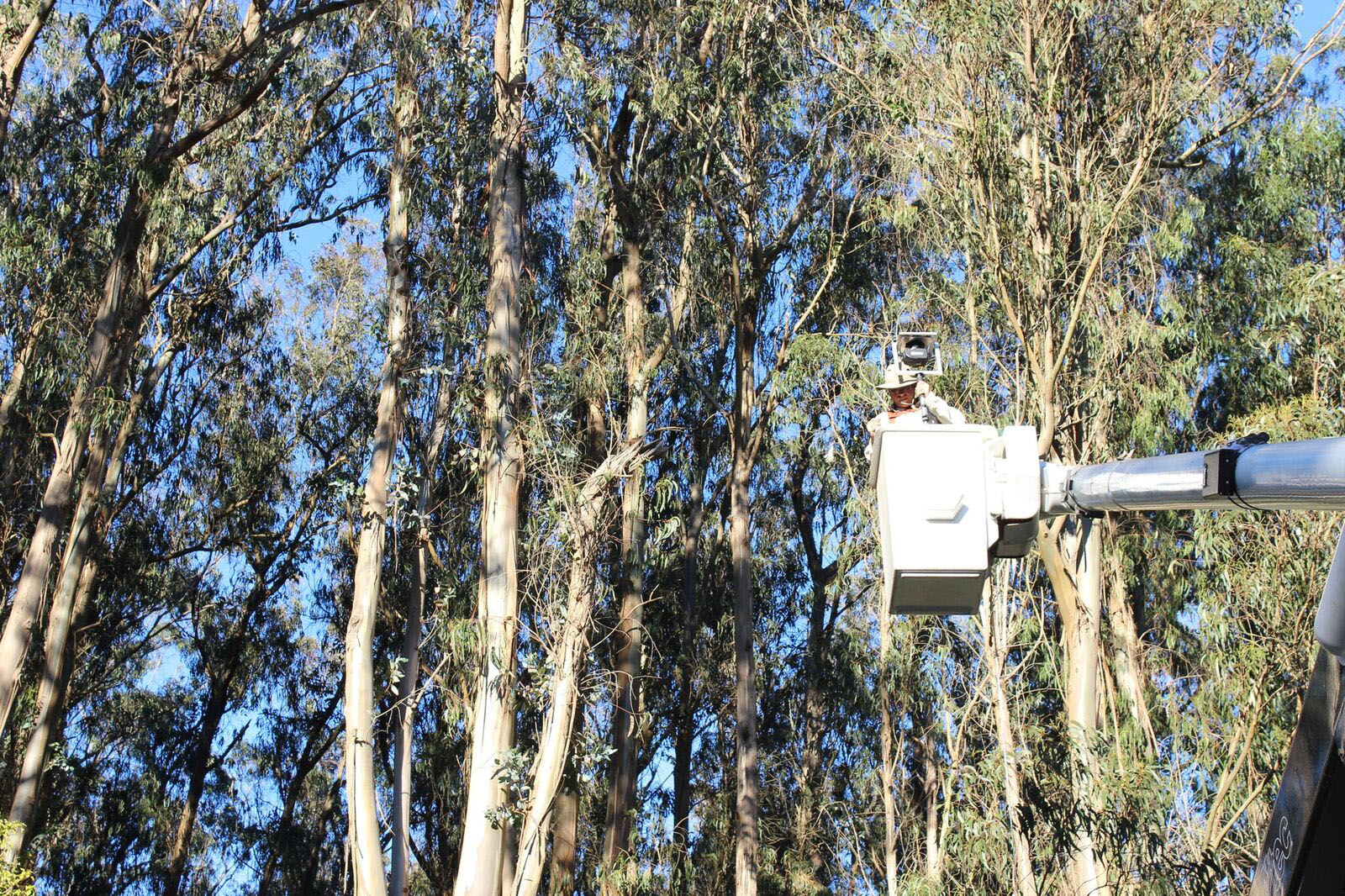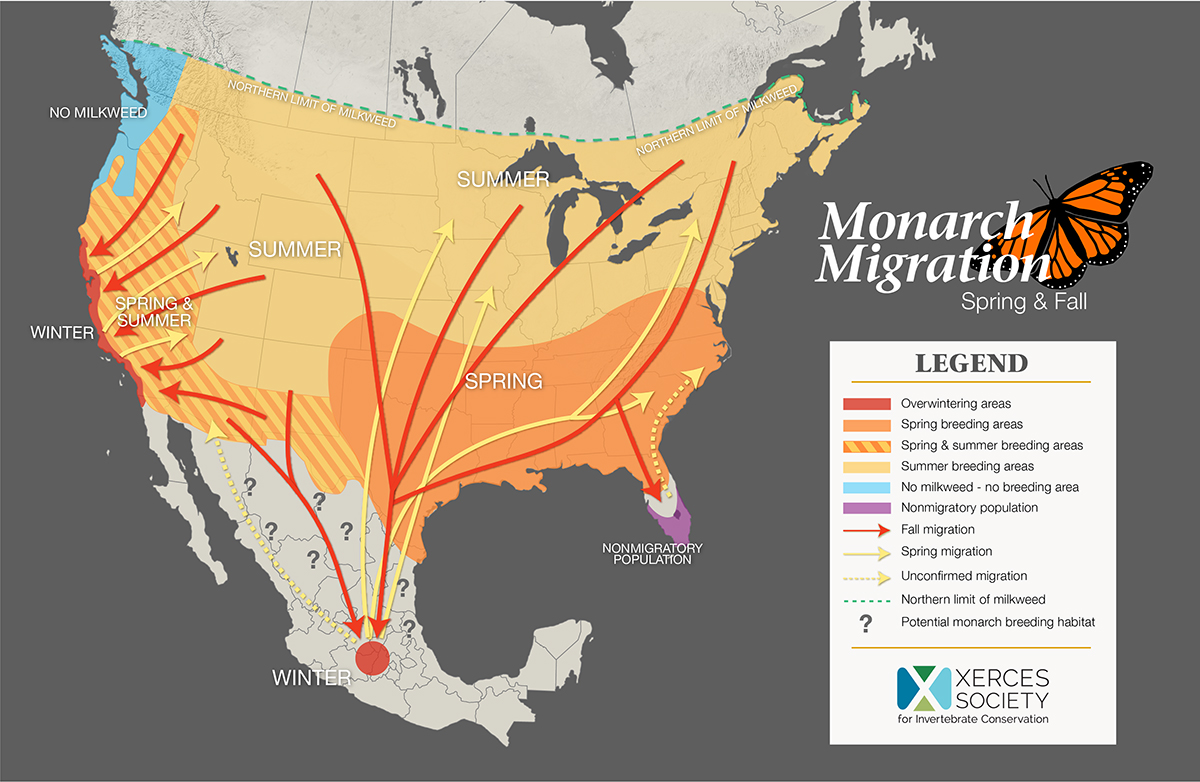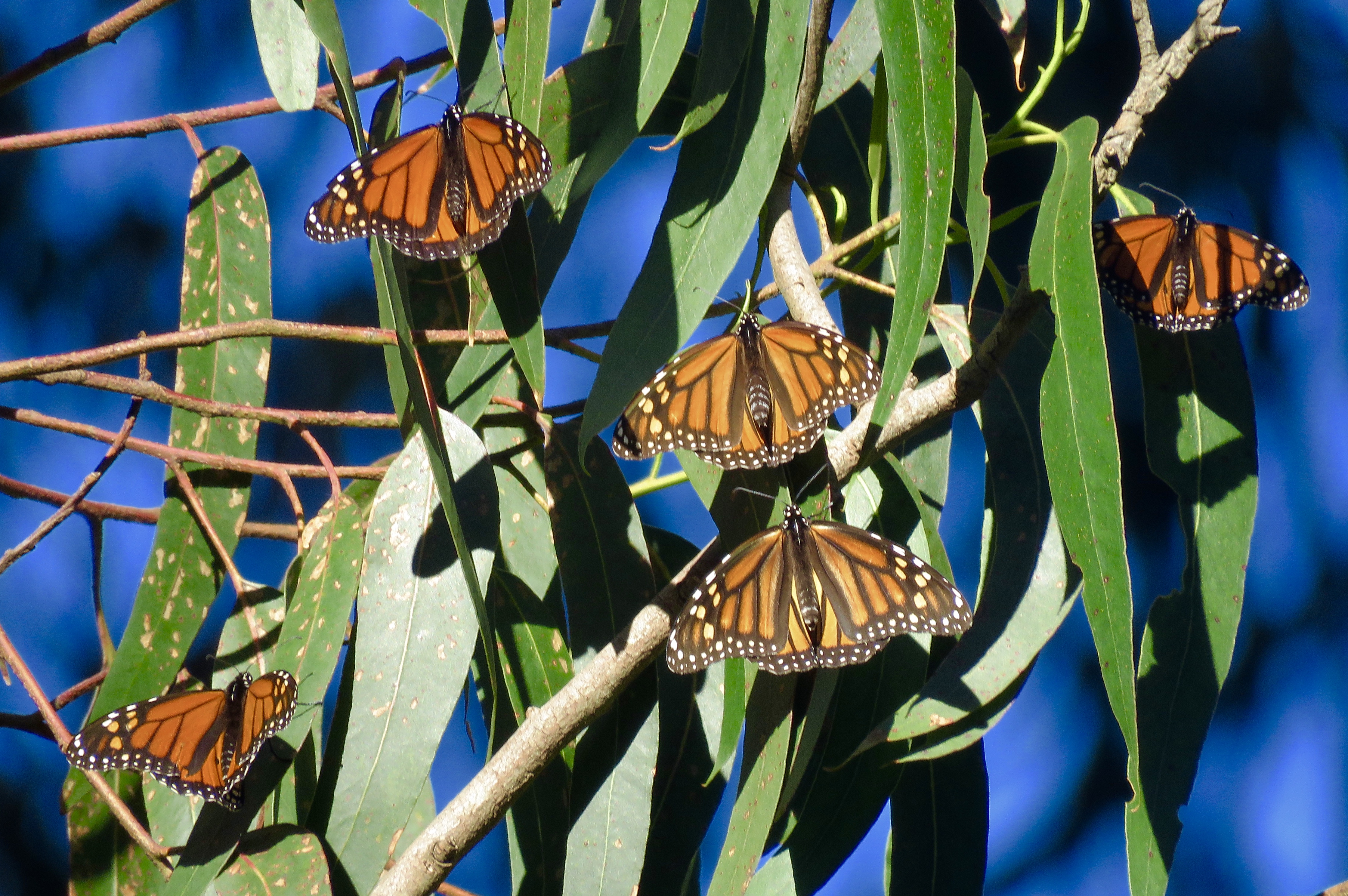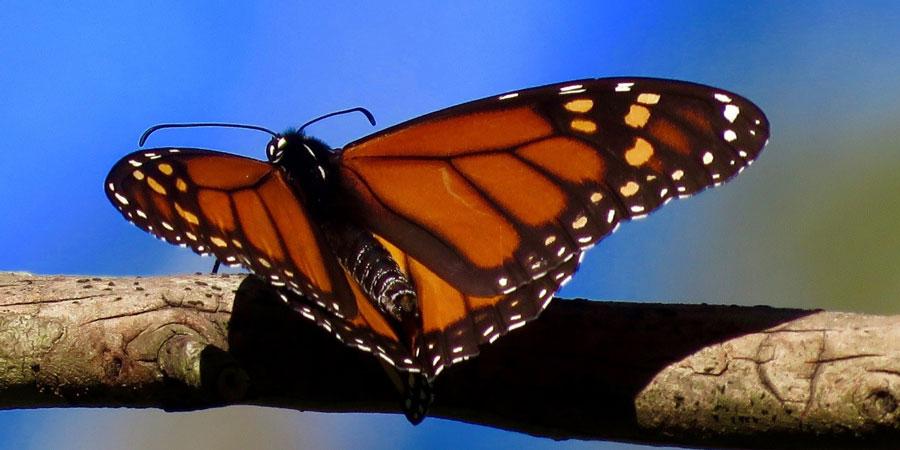Jan 6, 2017
Discovery of the Month: Western Monarch Butterflies Are Back in the Park
Monarchs are on the rebound thanks to Presidio restoration.Photo credit: Liam O’Brien
Historically, the Presidio was an overwintering site for the western monarch butterfly – they regularly came to the Presidio to rest and recharge through the winter (aka, “overwinter”). In particular, areas around Rob Hill Campground seemed to have the right balance of warmth and light, and our forest provided protection from blustery winds.
Jonathan Young, Presidio wildlife ecologist, says, “Monarchs are opportunistic – they developed an affinity for the Presidio’s non-native eucalyptus, Monterey pine, and Monterey cypress.”
But close to twenty years ago, their annual winter stopover drastically dropped off. In the 1990s, this species was on the verge of collapse across their entire range of North America, mainly due to habitat loss. Local ecologists were uncertain why the monarchs stopped returning to the Presidio, but about 12 years ago our Natural Resources team began working to enhance the quality of overwintering habitat for monarchs in a site near Rob Hill Campground.
 Stu Weiss conducting research at the Rob Hill Historic Forest.
Stu Weiss conducting research at the Rob Hill Historic Forest.
They worked in collaboration with the Presidio’s forestry crew, local artist/lepidopterist
Liam O’Brien, and Stu Weiss from Creekside Science. Liam began monitoring the site (see Western Monarch Count Resource for more information) and eight years ago Stu began studying the site, going up in a park cherry picker crane to test the temperature, light, and wind in the area. The Presidio Trust’s Natural Resources team used this information to inform habitat enhancement strategies.
Last year was the first year of this century that we found a change in the numbers of overwintering monarchs returning to the Presidio. And this year, the monarchs are back again in large numbers – more than 200 individual butterflies were spotted in a single day in the Presidio in early December. “They’ve never been nearly this high!” Liam shared. Though he’s seen a few scattered individuals in the area in the past, this year was the first time he’s seen a significant change in the number within a cluster.

Monarch Butterfly Migration
The western monarch butterfly can fly up to 100 miles in a day and, according to the Xerces Society page, typically migrates to the California coast with the Bay Area acting as their farthest northern destination in the area. They prefer the parts of Bay Area that provide a temperate climate and habitat. In the Presidio we’ve got wooded, coastal areas, which are hotspots for finding these beautiful and incredibly vivid creatures during the winter months.
Monarchs are typically found in large numbers because they “cluster” to help “thermoregulate,” or regulate their body temperature, utilizing sunlight for warmth. When a few individuals find a suitable microclimate with the proper sun and temperature, it’s like a cue for others, who follow in-step and cluster along with the rest of the group.
In the spring, monarchs head off in search of milkweed plants in other parts of the western states, where they’ll lay their eggs and, once hatched, the larvae will live off the plant. When winter comes, the monarchs are off again – returning to the same overwintering areas their ancestors migrated to in the winters before.
 Photo credit: Liam O’Brien
Photo credit: Liam O’Brien
Why Are the Monarchs Back in the Park…and Will They Stay?
Expert opinion: It’s hard to know.
According to the Presidio Trust’s Natural Resources specialists, the recent reappearance may be due in large part to the work being done to manage the butterfly’s habitat. A perfectly balanced forest is needed for the monarchs to be comfortable. Too dense a forest, and the canopy won’t let in the needed sunlight for the butterflies to survive. Too thin, and the forest won’t protect the butterflies from the wind.
But all the work seems to have finally paid off. There’s no way to know how long the monarchs will linger in the area, but everyone’s happy to see them back in the park for however long they choose to stay. If you’d like to witness the monarch’s clustering phenomenon, go here on a calm, sunny day. Just remember to stay on the trails as there’s a lot of sensitive habitat in the area, as well as poison oak.
Learn more about nature and sustainability in the Presidio >>
Be a part of one of our ongoing restoration projects >>
